Results 21 to 30 of 118
Thread: Nakayama Maruka
-
09-01-2015, 01:46 PM #21Member

- Join Date
- Aug 2015
- Location
- texas
- Posts
- 35
Thanked: 3
Well said!, I totally agree, for these type of people and I understand there may not be many, only the very best will suffice. The same goes for any trade that requires nothing but the very best.
-
09-03-2015, 11:10 PM #22Member

- Join Date
- Aug 2015
- Location
- texas
- Posts
- 35
Thanked: 3
I would like to know if this is a Nakayama? Thanks in advance.
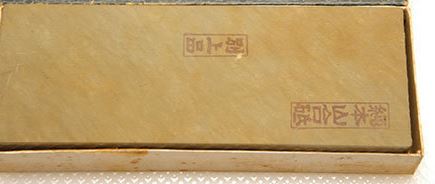
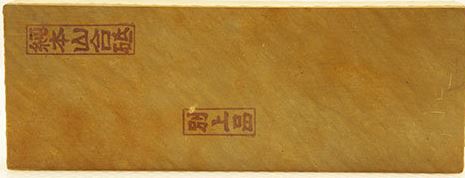
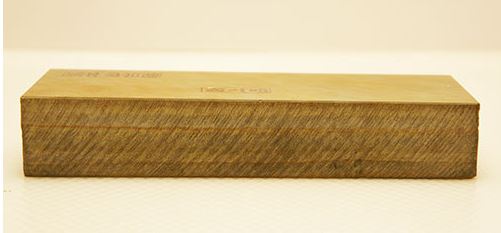
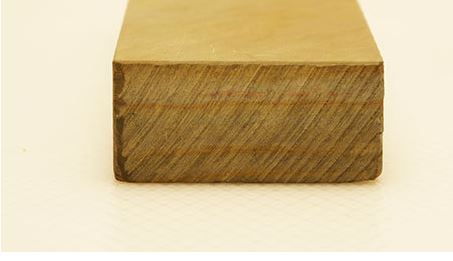
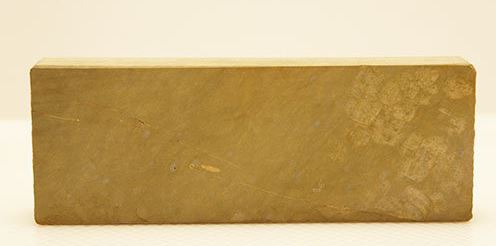
-
09-03-2015, 11:23 PM #23

PM Arsenico, he can translate kanji for you... but I would say it may very well be a Nakayama, or from the general Kyoto area, which can't be bad. If it's a quality awasedo (razor grade, I believe) and you trust the seller, then it's a winner.
Watch out for the remark about self-slurrying. Maybe more experienced among us will have something to say about that. I don't personally like it in a finisher, but that's just me. A few people I know (Vasilis is aparently one of them ) actually like to finish on slurry... gives an edge that's a bit toned down and not overly sharp.
As the time passes, so we learn.
) actually like to finish on slurry... gives an edge that's a bit toned down and not overly sharp.
As the time passes, so we learn.
-
09-03-2015, 11:44 PM #24Member

- Join Date
- Aug 2015
- Location
- texas
- Posts
- 35
Thanked: 3
Thanks! The stamps does not describe the name of the mine, but the sharpening surface has Jyunhonyama Awasedo, meaning finishing stone and Betsujyo (best quality) stamps on it. Price is $475.
-
09-04-2015, 02:32 AM #25

No way to definitively tell provenance of this stone.
The white gleam of swords, not the black ink of books, clears doubts and uncertainties and bleak outlooks.
-
09-04-2015, 02:51 AM #26I used Nakayamas for my house



- Join Date
- Aug 2009
- Location
- Des Moines
- Posts
- 8,664
- Blog Entries
- 1
Thanked: 2591
In general many stones get re stamped for commercial purposes, if the seller is honest then the stone will indeed be as described. Even if a stone as from the mine which stamp it carries, there is still no guarantee it will work well. What I am saying is that stamps are not everything, but definitely can bring higher price.
Stefan
-
09-04-2015, 01:41 PM #27

Lots of good advice here.
The stone in the above photo shows no evidence of being from the Nakayama mine, or from any other mine for that matter, it just looks generic.
And from my experience, assuming that it is in the 205-75-30mm thick range with perfectly square corners, even grain throughout, sawn on all sides including the back, and "yellow" I would suggest that if it were at a fair price, it really was a Nakayama kiita, that it would be worth your time and the extra expense (compared to the stones price) to fly to Japan and test it out first. We would be talking big dollars here for a Grade A Nakayama kiita.
Everyone in Japan has ink stamps now, the fact that this one shows no attribution is also suspect too if it was coming from a retailer. If I were to guess from the photos I would say from the Tamba area, out beyond Ohira and it is most likely Atagoyama, Maruoyama pedigree.
AlexLast edited by alx; 09-05-2015 at 01:20 AM.
-
-
09-04-2015, 03:39 PM #28Member

- Join Date
- Aug 2015
- Location
- texas
- Posts
- 35
Thanked: 3
Thank you all for some great advice.
Did I get this correct by self-slurrying does that indicate the stone is on a softer side and there is no need to use a nagura?
I searched this forum for a grade A Nakayama pictures that Alex is referring to above. Just was curious to see how they look, with my limited knowledge there is no way I could decipher a Grade A from B but want to know.
Thanks once again.
-
09-05-2015, 12:13 AM #29
-
09-05-2015, 12:54 AM #30

Yes, a self slurrying stone would be on the softer side, with any stone especially medium hard and soft the slurry action begins when water is added, the clay components begin to soften and grit begins to release. The next step is friction from a blade and the slurry will begin in earnest. With harder stones this happens too but the harder the stone the more stingy the grit release.
Grading stones is a hands on deal, you have to test them out at some point but a lot of the grading is self explanatory. The first grading happens deep in the mine, the miners can tell a lot about the stone by tapping it with a sledge to hear if it rings pure, and from where in the mine the layer is coming from. Next outside the mine entrance a lot happens because it is labor intensive to haul stone down the steep road less mountain side so waste gets dumped over the side and only the good stone gets roughed out and carried down the to the workshops. Before a saw hits the stone some rough stone is already sold. The last grading gets done at the wholesalers who market the stone to: carpenters, polishers, barbers, and other crafts persons. About 10% of the raw tonnage in the mine makes it to the wholesaler and less than 1% of that is barber kamisori toishi quality. Here is a quick list to grade stones, pretty simple if you think about it:
Large top deck trumps small top surface
No cracks trumps some cracks
All whole & square corners trumps chipped corners
Fineness trumps coarse
Cutting speed trumps slow cutting speed
Thickness trumps thin
Nakayama trumps all other mines
Color stones trump bland stones
Those are the basics.
Then:
Eastern mines almost always trump Western mines
Older stock or even used stones can trump the obvious newly made up stones
Highly figured granular patterns generally trump plain monolithic patterns and colors
Kiita trumps most everything
Renge trumps plain
Nashiji trumps plain
Most anything trumps light gray
Old stamps for me trump new fresh ink stamps
That’s the gist of it.
There are aesthetics involved, everyone chooses an appealing entity, and I would rather not follow trends. I am not an actual collector but instead I am a user so a really pretty stone also has to have good sharpening abilities.
All of this is about marketing, after all this is a business in Japan. But the grading is critical because in Japan maintaining ones reputation is super important. Everyone on down the ladder can do what they want with the prices but the retailers in general are just shop keepers and sometimes don't even know how to use the stones. Some may have been crafts persons but not often because in the old school retailers were the lowest of the low on the social scales. Samuri were the top, Farmers were very high, crafts people were very high and sales people were very low because the essentially produced nothing. The lowest on the scale were lazy people with big opinions and nothing to loose. Believe it or not historically the yakuza gangsters were not as low as retailers because they did maintain some sort of order especially in rural areas.
The yellow stone in the photograph might be considered to be a Grade A stone from that particular mine if it is fine and fast cutting but I think that those alternate grit strata would put a lower grade on it.Last edited by alx; 09-05-2015 at 01:18 AM.
-


 79Likes
79Likes LinkBack URL
LinkBack URL About LinkBacks
About LinkBacks






 Reply With Quote
Reply With Quote


